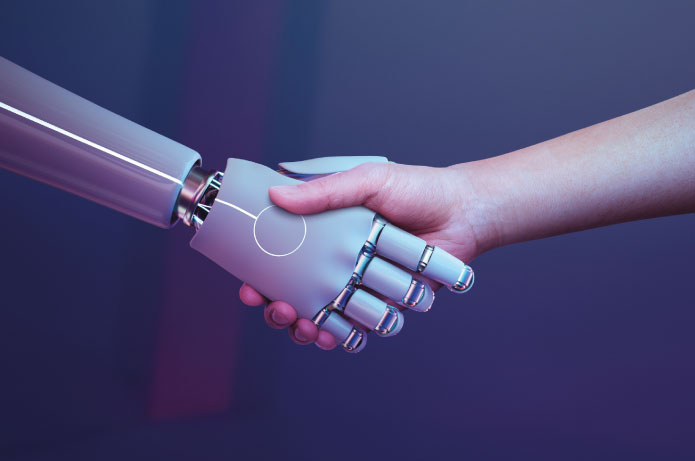NRF 2025 Big Show, held in New York, reaffirmed its relevance as the main global stage for discussing trends and innovations shaping worldwide retail. From January 12-14, executives, CEOs, and industry leaders shared their strategies, challenges, and visions that are redefining the market. From the perspective of leadership in retail and franchising, I explore below the key takeaways and standout case studies from the global event, as well as lessons that could impact retail in the long term.
Artificial intelligence (AI) continues to be the driving force behind retail transformation. Companies like Amazon and Walmart demonstrated how AI is being used to revolutionize processes, improve customer experience, and optimize operations.
At Amazon, AI is integrated across multiple fronts—from the conversational shopping assistant Rufus, which answers complex consumer questions, to logistics enhanced by mobile robots and analytics systems that highlight product pros and cons. Meanwhile, Walmart’s partnerships with tech companies like NVIDIA are enabling the use of digital twins to predict demand, optimize inventory, and even simulate store layouts. Efficiency isn’t just operational but also strategic, creating smarter, more connected stores.
This comprehensive use of AI positions the technology as essential for meeting growing demands for personalization, agility, and efficiency.
NRF 2025 also made it clear that omnichannel is no longer optional but a necessity for retailers who want to remain competitive. Practical examples reinforcing this idea highlight the importance of integrated strategies focusing on driving traffic to physical stores, which play an increasingly central role in the customer’s product experience and brand relationship.
Two key insights on this are hybrid stores,iintegrating physical and digital, where retailers offer a seamless experience combining convenience and personalization; and social commerce, where platforms like TikTok and Instagram are increasingly relevant for driving sales and engagement, as demonstrated by Pacsun, which reported 10% of its digital sales originating from these platforms. This integration allows companies not only to meet customer expectations but also to surprise them with innovative and meaningful experiences.
Sustainability has emerged as one of the central topics of the event in recent years. This theme reflects a definitive shift in consumer mindset. Newer generations, especially Gen Z and Alpha, prioritize brands that share their values, requiring a complete restructuring of retail operations—such as waste reduction, where sustainable packaging, recycling initiatives, and reuse programs are at the core of brand strategies; and eco-friendly products, as demand for local, organic, andplant-baseditems continues to grow, expanding the concept of conscious consumption beyond the food sector to include personal care and home goods. In this sense, those who can align sustainable practices with operational efficiency will lead the market and cater to a niche that keeps growing in retail.
Despite the rise of e-commerce, physical retail is reinventing itself as a space for connection and experimentation. Even with AI and new technologies, direct customer interaction, with humanized and personalized service, remains a competitive differentiator and a key factor in brand-consumer relationships.
Two standout cases illustrate this. At American Girl (Mattel), doll customization not only boosts customer engagement but also increases the average ticket per visit. The brand heavily invests instorytellingon social media, attracting younger audiences while also evoking nostalgia in adult customers. Meanwhile, Foot Locker’s investments in interactive technology and personalization for female audiences show how understanding evolving customer expectations can transform a business.
Physical stores now transcend the simple act of selling products, becoming points of contact that create unique and memorable experiences.
NRF 2025 also addressed the economic and technological challenges the sector faces while highlighting promising opportunities. The challenges areinflation, technological disruption, and rising consumer expectations, which increase pressure on retailers. As for opportunities, advanced personalization, driven by data and AI, and social commerce offer new ways to engage and retain consumers.nflação, a disrupção tecnológica e as expectativas crescentes dos consumidores que aumentam a pressão sobre os varejistas. Com relação às oportunidades, a personalização avançada, impulsionada por dados e IA, e o comércio social oferecem novas formas de engajar e fidelizar os consumidores.
The vision for the future
The future of retail will be defined by the ability to balance technological innovation with meaningful human experiences. Personalization will be a key competitive differentiator but must be accompanied by an ethical and transparent approach to data usage. Sustainability, innovation, and an unwavering focus on the customer will be at the core of successful strategies.
The importance of leadership within companies was also a highlight at the show. Creating and maintaining a strong culture has become an imperative for the industry, with a focus on developing this culture through people by clearly communicating and disseminating purposes and values both inside and outside companies.
Once again, we observe how the majorplayersin retail are aligned regarding the protagonism of people in business strategy. In this sense, service, customer experience, training, and behavior are recurring themes across different contexts.
NRF 2025 demonstrated that the retail sector is in constant evolution, and only those who embrace change with creativity, resilience, and purpose will succeed in an increasingly dynamic industry.


